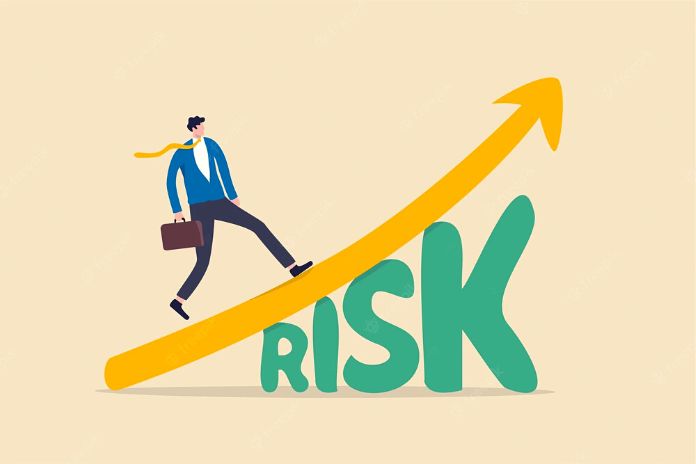Correctly Assess Risks In The Company
When a project fails, or goals are missed, uncalculated risks are often the problem. Risk analysis is a method that makes these potential hazards visible.
Risk Assessment In Project Management
Risks in project management can’t make a venture burst; however, most importantly, they harm the actual association. Monetarily, this can immediately become dangerous. It is even more essential to survey expected gambles and neutralize them. So how is a gamble investigation made? What’s more, how could this be organized? We will tell you the best way to begin straightforwardly with a suitable format so that dangers may affect your ventures.
What Exactly Is A Risk Analysis?
Risk analysis in the project includes all assessments and evaluations of potential risks. It establishes the groundwork and the subsequent stages in arranging measures and the other methods in projects. The investigation is a steady cycle that goes with the whole task course. Notwithstanding the ID and assessment, checking these dangers is vital to the gamble, the project of the executives, and deliberate interaction. With the gamble investigation, the undertaking board decides probabilities of how many occasions can compromise the organization and the related likelihood of the event. During the computation, standards determined ahead of time are contrasted and decided values that characterize the gamble.
Goals Of A Risk Analysis
The purpose of a risk analysis is obvious: many (possible) adverse events should be reduced. This allows the cause of the problem to be “treated” right from the start rather than just alleviating the symptoms afterward. It should therefore be an integral part of project planning.
Example: What Project Risks Are There Anyway?
Of course, the question arises as to what these project risks can look like. Below we have collected some practical examples for you:
- Lack of resources: In addition to the material, a lack of personnel can quickly become a problem and bring projects to a halt.
- Incorrect or security gaps in IT systems.
- The price expectations of the suppliers exceed the budget.
- Procurement processes are delayed.
- New legislation
- changes in the market
- Poor quality in production
These are just a few real-world examples of potential risks that can cause a project to fail—although the list could probably go on (almost) endlessly. So that the risk is as low as possible, the risk is analyzed.
Structure And Content Of A Risk Analysis
Complicated techniques are typically not expected to make a gamble investigation. It is significantly more vital to utilize innovative techniques to sift through likely dangers – for instance, through conceptualizing. Most importantly, the technical information on the task group is trusted, or finished projects are utilized. The examination, for the most part, happens in four stages.
Step 1: Define Risks
The first step is to collect all relevant risks in a list. Other methods, such as stakeholder or project environment analysis, also help, some of which already list weaknesses in a specific area. Questions like “Who is our competition? Which laws do we have to observe? What do I need to know about my stakeholders?” These risks should always be related to deadlines, project costs, personnel, or software. In the case of recurring projects, the risks are usually quickly identified. In this case, teams can ask themselves: What can we do even better than last time?
Step 2: Assess The Risk
The next step is to assess the identified risks. Here you ascertain the likelihood of the event of the particular gamble with the potential impacts. Well-qualified sentiments can likewise be incorporated independently. For repeating projects, special arrangements can be utilized – however, for the most part, project administrators need to allude to their appraisals and assessments. The higher the gamble esteem, the “more perilous” the dangers are for the task and the association. The assessment of the dangers – e.g., in a gamble lattice – is the reason for the ensuing preparation of the actions. The gambling network outlines the likelihood of a gamble happening and its effect on the organization. A differentiation is made among low and high gambles and has little to huge effects on the undertaking.
Step 3: Create An Action Plan
When creating an action plan, measures are defined that minimize relevant risks. The objectives of the measures can be formulated using the SMART formula. These errands and tasks are often executed in little groups since they are typically completed lined up with the undertaking. To do this, project directors should realize who has the valuable ability for which subject. So who is answerable for the action and the comparing risk? In the project, the executive’s programming this errand can be ready, organized by need and cutoff time, and put on the computerized work area of the mindful venture part. In the device, the undertakings can be connected straightforwardly to the task. Task periods can likewise be effortlessly changed, and prerequisites can be unequivocally put away in the errand depiction.
Step 4: Monitor The Risks
The last step runs through the entire course of the project: monitoring the risks. It is consistently checked whether the assessed measures are gainful in decreasing the dangers – or whether new ones must be laid out if essential. Moreover, new shortcomings can emerge over and over throughout the task. This audit ought to happen at standard spans.
Risk Matrix Templates
The risk matrix, therefore, covers all risks in a project. These can be strategic, financial, technical, or even external threats. The matrix prioritizes these threats to establish measures in order of importance.
Remember To Document The Risk Analysis
The risk analysis and measures should be recorded for the executives’ risk. This works consequently in a PM device, wherein the whole undertaking can be evaluated over and over a short time later. A great layout can likewise be made for repeating projects, which currently contain an assessed plan of measures. Subsequently, advanced project documentation is accessible whenever.
Also Read: The CRM Duel: HubSpot CRM Vs. Salesforce

